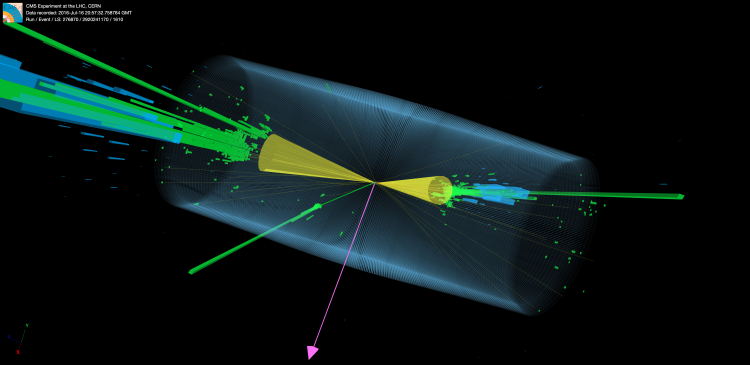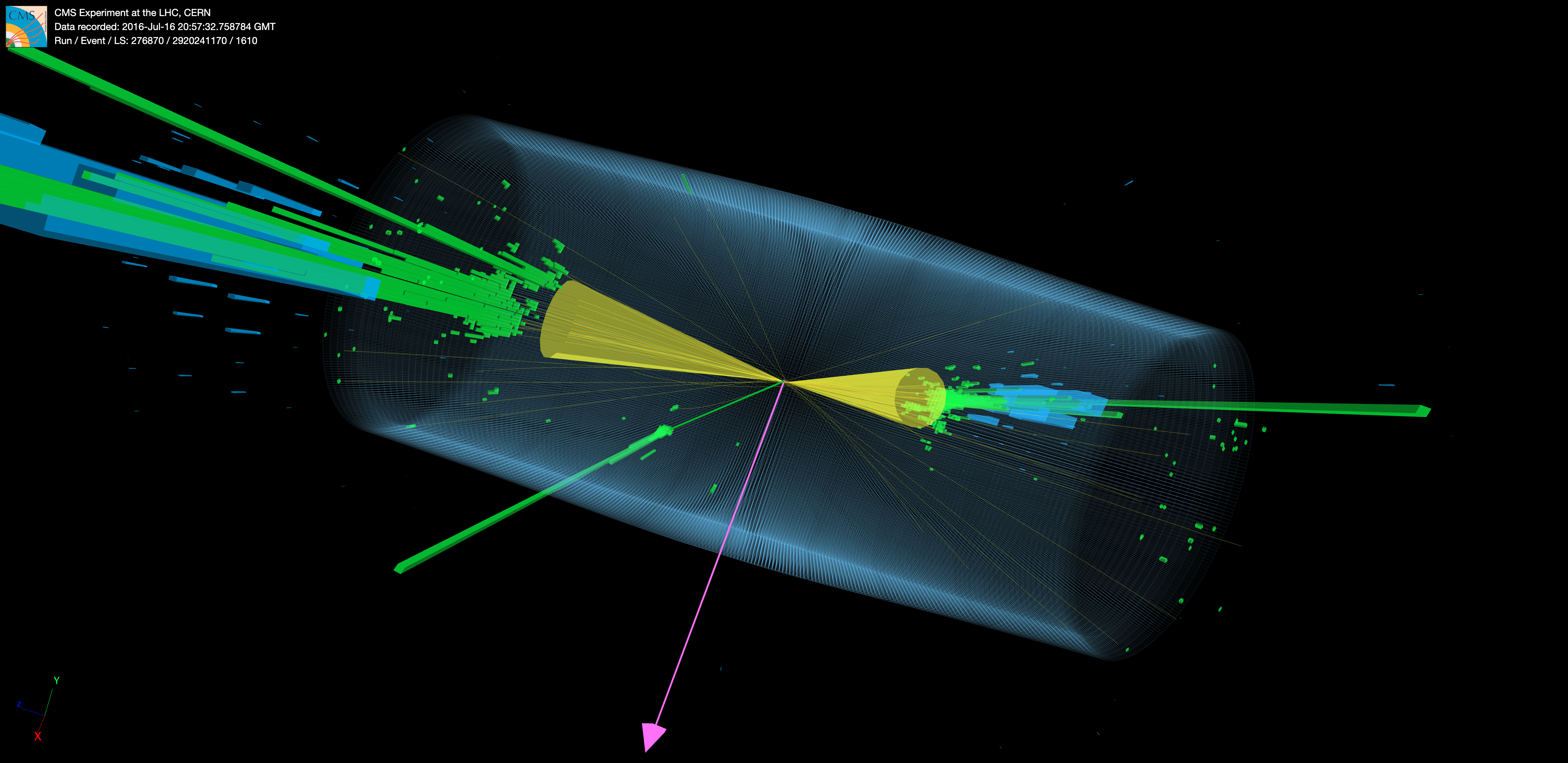
The Standard Model of the fundamental particles describes the W and Z bosons as the mediator particles of the weak force, one of the four known fundamental forces responsible for the phenomenon of radioactivity and an essential ingredient to our Sun's thermonuclear process. W boson can decay into an electron, muon or tau, and the corresponding neutrino. It can also decay hadronically into quarks with a larger branch ratio of around 67%. The CMS collaboration has recently released the results of a brand-new search for "new physics" by combining three W bosons under its microscope.
The W boson can be exploited as a probe either for precise Standard Model tests or new physics searches when undiscovered particles are searched for that decay to W bosons. For example, in June 2020, the CMS collaboration has released the first observation of the simultaneous production of three W or Z bosons, a Standard Model process that appears 50 times more rarely than the production of the already very infrequently produced Higgs boson. The W bosons from the Standard Model are mostly produced with relatively low momenta. When W bosons are produced at high momenta, the W decay products are close together and are merged into a hadron cluster called boosted or fat jet.
Searching for new physics, e.g. new heavy resonances, is one of the most important tasks at the CERN LHC. Probing these through two-body decays into diboson final states has received much attention in previous years; in parallel, techniques to deal with boosted jets have been developed and exploited extensively. However, a resonance resulting in a three boson final state, a triboson resonance, has never been directly searched before. The motivation for such a search can be found in recent theoretical models based on extra dimensions that indicate there could be new heavy particles visible at the LHC in final states with three bosons.

Figure 1: Feynman-like diagrams for the decay of a new particle WKK decaying to the final states considered in this analysis. Left: three individually reconstructed W bosons; right: one separately reconstructed W boson and two W bosons reconstructed as a single fat jet including up to 4 quarks.
The first triboson search is now presented by the CMS collaboration for TeV scale resonances decaying in cascade to three W bosons. The result is based on the data collected by CMS during 2016–2018. Collisions are selected to isolate three W bosons by requiring that they contain one lepton plus missing transverse momentum, and one or two massive fat jets from W bosons. Requiring only one jet at first would not seem useful when there are two W boson jets, but this actually helps increase events at very high mass, at which point two W boson jets may merge in a single WW jet. The boosted jet tagging techniques are based on machine learning and allow this search to be sensitive to possibly tiny signals with the LHC Run 2 dataset. The specific method to calibrate tagging performance on 4-quark WW jets has also been developed with this study. Only through all those challenging improvements it is possible to have three W bosons to study. It is just like what the ancient Chinese poet Qu Yuan (c. 340–278 BC) mentioned in his poem The nine songs: Mountain Spirit:
"I picked three-bloom asphodel out in the hills, on slopes rough and rocky, through tangles of vines".

Figure 2: An event display for a tri-W boson candidate event, with two W bosons decay into quarks symbolized by the yellow cones with transverse momentum as 885 and 847 GeV, respectively, while the third W boson decays leptonically into an electron with a momentum of 113 GeV and indicated by the green line and narrow green energy deposit, and a neutrino that is only seen as 80 GeV of missing transverse momentum, represented by the pink arrow.
This is the first time the CMS experiment was used to search for the production of triboson resonances at the LHC. The analysis does not observe a significant deviation of the data from the predictions by the Standard Model. Without a deviation from the standard model, it is possible to set limits on what physics models are still allowed. However, this is only the start, and in future runs of the LHC and High-luminosity LHC there will be a lot more data to achieve an in-depth probe of the underlying structure beyond the Standard Model. The technique to tag and calibrate 4-quark WW jets also opens new windows to explore boosted Higgs bosons or other similar final states at the LHC. By combining various types of bosons, e.g. W, Z, photon and Higgs, one may expect many new results or hopefully even a surprise in the future.
Read more about these results:

